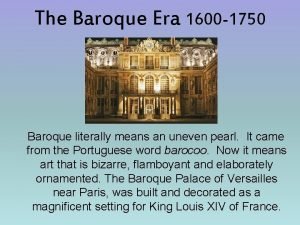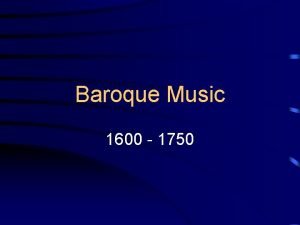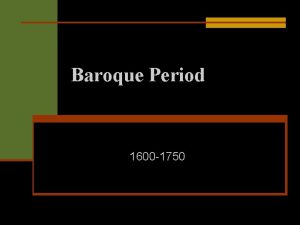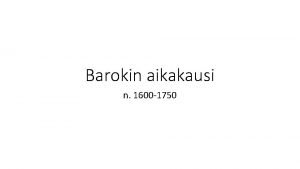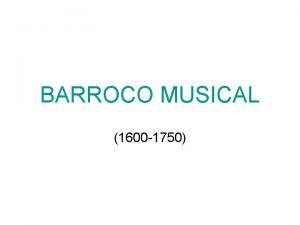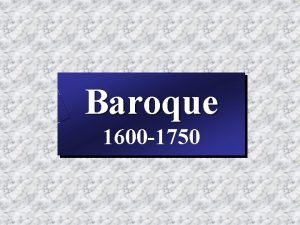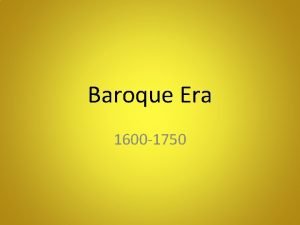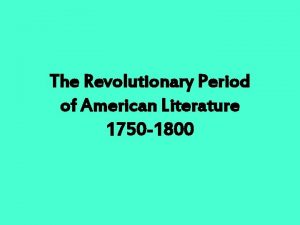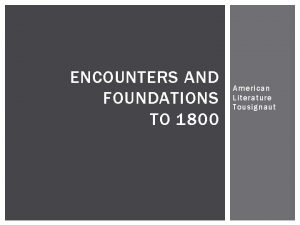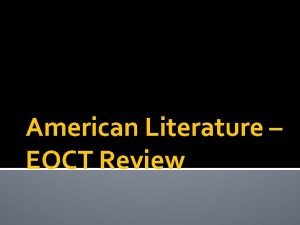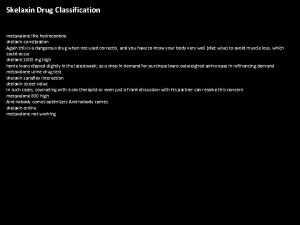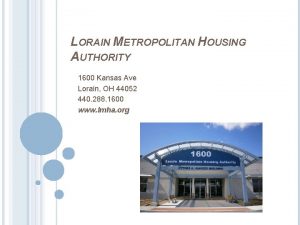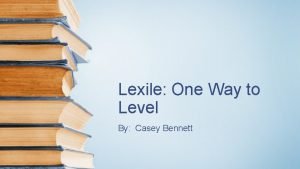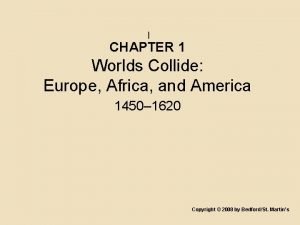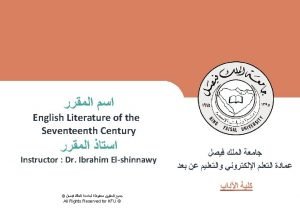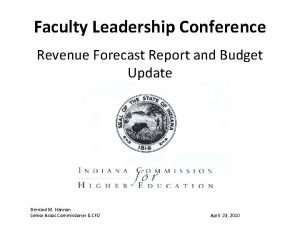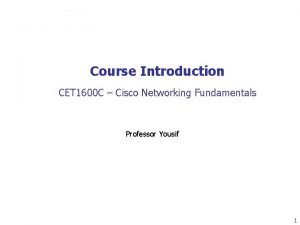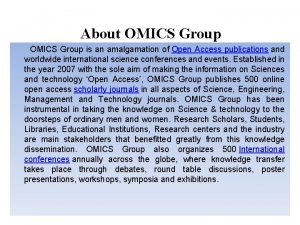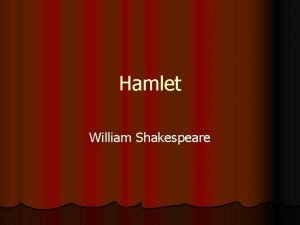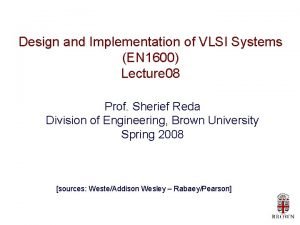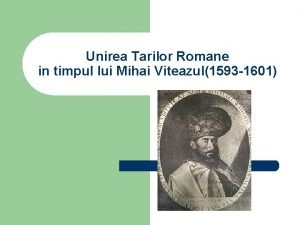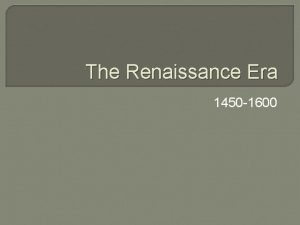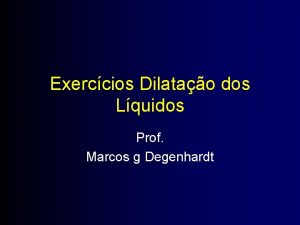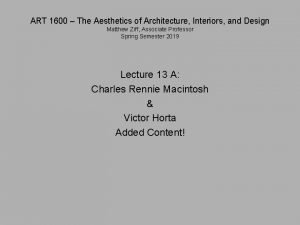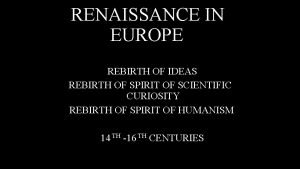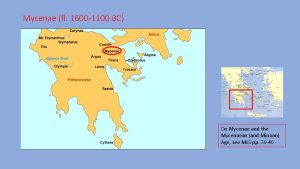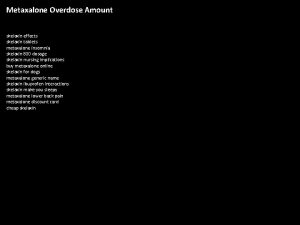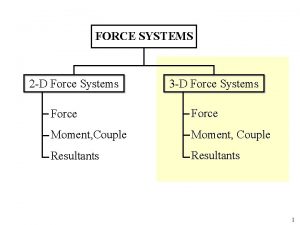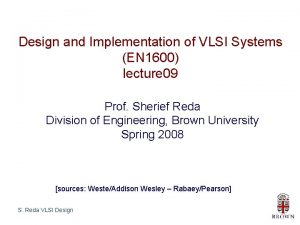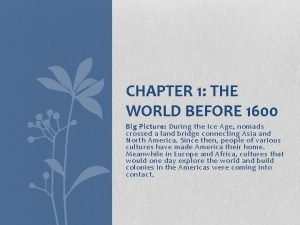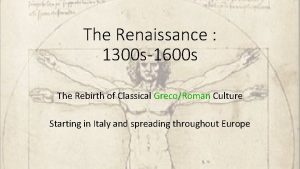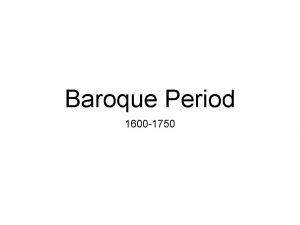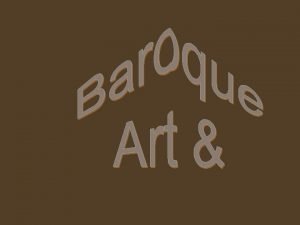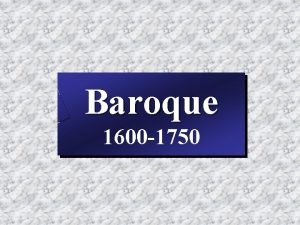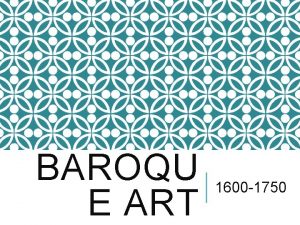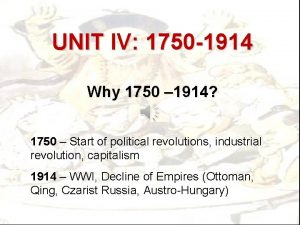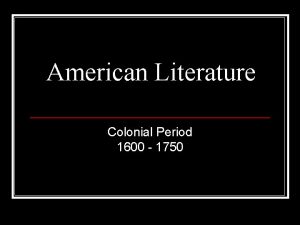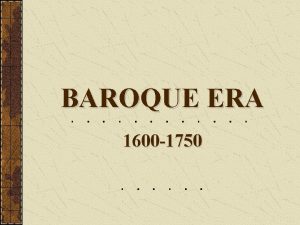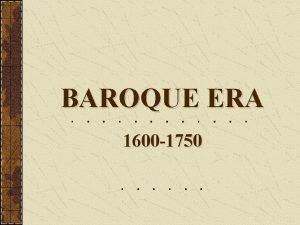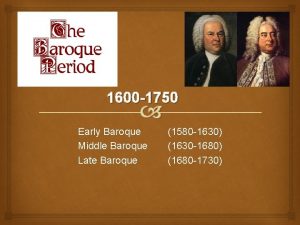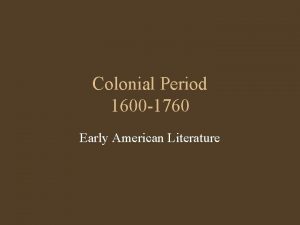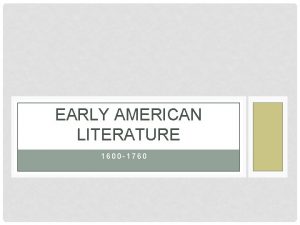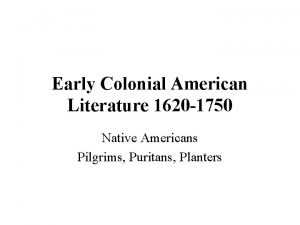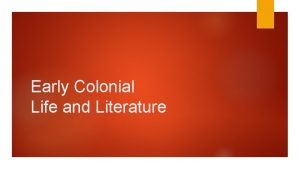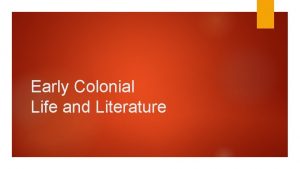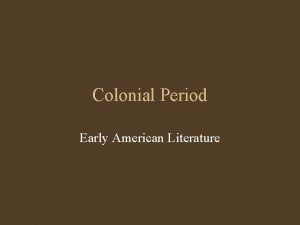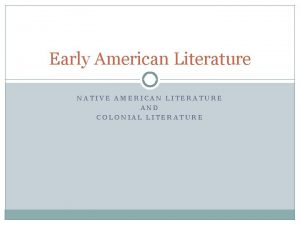Early American literature 1600 1750 Early American literature





































- Slides: 37

Early American literature (1600 – 1750)


Early American literature � Exploration of the New World. � The birth of American literature. � American sermons and puritan poetry.

Exploration of the New World � Christopher Columbus (1451 – 1506) 'the man who discovered America‘ In 1492, while leading a Spanish-sponsored three-ship flotilla in search of a shorter route to Asia, Italian navigator Christopher Columbus happened upon America in the form of Guanahani (probably San Salvador Island, though maybe another Bahamian island or the Turks and Caicos Islands). Another Italian navigator, John Cabot, sailing for England, made his way to Canada about this time, but not until 1497, after Columbus. As a result, Columbus was nearly universally declared the “discoverer” of America.

Leif Ericson (c. 970 – c. 1020) Norse explorer is widely held to have been the first European to reach the shores of North America. According to “Erik the Red’s Saga”, while returning to Greenland in about 1000, Leif was blown off course and landed on the North American continent, where he observed forests with excellent building timber and grapes, which led him to call the new region Vinland (“Land of Wine”).

The Vikings A Viking trader and adventurer named Thorfinn Karlsefni set off from the west coast of Greenland with three ships and a band of Norse to explore a newly discovered land that promised fabulous riches. Following the route that had been pioneered some seven years before by Leif Eriksson, Thorfinn sailed up Greenland’s coast.

All the detail about Norse trips to Vinland (as the Norse called North America) comes from two accounts: The Saga of Erik the Red and The Saga of the Greenlanders.

Amerigo Vespucci (1454 – 1512) A merchant and explorer-navigator who took part in early voyages to the New World. The name for the Americas is derived from his given name.

John Smith (c. 1580– 1631) John Smith was a British soldier who was a founder of the American colony of Jamestown in the early 1600 s.

A Description of New England by JOHN SMITH (1615) Smith stresses his ultimate purpose is to serve his country well and to encourage families and tradesmen and so on to go to New England because it will be of "incredible benefit to King and Country, Master and Servant. "

Spanish colonization of America � It started in 1492 when monarchs Isabella and Ferdinand financed the voyage of Christopher Columbus, resulting in Spanish contact with the Americas. The Pope gave Spain control over the Western Hemisphere in the 1494 Treaty of Tordesillas, and Spain colonized the Caribbean by roughly 1510.

The Netherlands. The Dutch colonization of the Americas. � In 1609, two years after English settlers established the colony of Jamestown in Virginia, the Dutch East India Company hired English sailor Henry Hudson to find a northeast passage to India. The Dutch involvement in North America started after Henry Hudson, sailing under a Dutch flag in 1609.

French colonization of America New France, French Nouvelle-France, (1534 – 1763), the French colonies of continental North America, initially embracing the shores of the St. Lawrence River, Newfoundland, and Acadia (Nova Scotia) but gradually expanding to include much of the Great Lakes region and parts of the trans. Appalachian West.

British colonization of America British America included the British Empire's colonial territories in America from 1607 to 1783. These colonies were formally known as British America and the British West Indies before the Thirteen Colonies declared their independence in the American Revolutionary War (1775– 1783) and formed the United States of America.

NEW ENGLAND � New England is a region, northeastern United States, including the states of Maine, New Hampshire, Vermont, Massachusetts, Rhode Island Connecticut.

The birth o American literature (1608) � Captain John Smith began writing soon after his arrival and in 1608 completed A True Relation of Such Occurrences and Accidents of Note As Hath Happened in Virginia, which many consider to be the first book written in English in the American colonies.

Puritanism a religious reform movement in the late 16 th and 17 th centuries that sought to “purify” the Church of England of remnants of the Roman Catholic “popery” that the Puritans claimed had been retained after the religious settlement reached early in the reign of Queen Elizabeth I. Puritans became noted in the 17 th century for a spirit of moral and religious earnestness that informed their whole way of life, and they sought through church reform to make their lifestyle the pattern for the whole nation. Their efforts to transform the nation contributed both to civil war in England to the founding of colonies in America as working models of the Puritan way of life.

Mayflower route

Plymouth colony � In September 1620, during the reign of King James I, a group of around 100 English men and women—many of them members of the English Separatist Church later known to history as the Pilgrims—set sail for the New World aboard the Mayflower. Two months later, the merchant ship landed on the shores of Cape Cod, in present-day Massachusetts. � In late December, the Mayflower anchored at Plymouth Rock, where the pilgrims formed the first permanent settlement of Europeans in New England. Though more than half of the original settlers died during that grueling first winter, the survivors were able to secure peace treaties with neighboring Native American tribes and build a largely self-sufficient economy within five years. Plymouth was the first colonial settlement in New England.

The Mayflower Compact, document signed on the English ship Mayflower on November 21, 1620, prior to its landing at Plymouth, Massachusetts. It was the first framework of government written and enacted in the territory that is now the United States of America.

William Bradford “History of Plymouth Plantation, 1620 – 1647” “History of Plymouth Plantation” is a firsthand account of both the events leading up to the voyage of the Mayflower and the first twentyfive years of settlement in Plymouth, Massachusetts. It was written as a journal by William Bradford, a passenger on the Mayflower who also served multiple terms as Plymouth’s governor.

Thomas Hooker John Cotton Roger Williams

American sermons and puritan poetry � For all of the 17 th and most of the 18 th century, the sermon was the dominant literary form in the American colonies. � A sermon is a religious discourse delivered in public usually by a member of the clergy as a part of a worship service. � The Puritan sermon was a democratized scholastic lecture communicated in a translating Scripture into meaning to be applied to practical polemics and living.

“A model of Christian Charity” by John Winthrop “A Model of Christian Charity” is a 1630 sermon by Puritan layman and leader John Winthrop, who delivered on board of the ship “Arbella” while en route to the Massachusetts Bay Colony. It is also known as City upon a Hill and denotes the notion of American exceptionalism.

Sermon on the Mount � 14 “You are the light of the world. A town built on a hill cannot be hidden. � 15 Neither do people light a lamp and put it under a bowl. Instead they put it on its stand, and it gives light to everyone in the house. � 16 In the same way, let your light shine before others, that they may see your good deeds and glorify your Father in heaven. Matthew 5: 14 -16

Puritan poetry � Edward � Anne Taylor (1642 – 1729) Bradstreet (1612 – 1672)

The Poetry of Anne Bradstreet Most of the poems included in Anne Bradstreet's first collection, The Tenth Muse (1650), were quite conventional in style and form, and dealt with history and politics. The publishing success of The Tenth Muse seems to have given Anne Bradstreet more confidence in her writing. She refers to this publication, and to her displeasure with being unable to make corrections to the poems herself before publication, in a later poem, "The Author to Her Book“. Her style and form became less conventional, and instead, she wrote more personally and directly — of her own experiences, of religion, of daily life, of her thoughts, of the New Englandscape.

Anne Bradstreet: Types of poetry Religious Meditations � Individual prayers from his own distress � Published after her death (not meant for public view) � Domestic Poems � “Upon the Burning of Our House” � Love Poems � “To My Dear and Loving Husband” � Elegiac Poems � Epitaphs about her loved ones � “In Memory of My Dear Grandchild” � Contemplations � 33 stanzas � Each was its own entity � All were interrelated � Expressed the poet’s recognition of God in nature (a rare subject at that time) �

Anne Bradstreet � Poetry reflects trials about her new circumstances in New World � Sometimes questions truth & spiritual matters accepted by her religious sect (Puritans). � Her poetry does not reflect the avenging God of the Puritans � Ideal of divine and tender love predominates I have often been perplexed that I have not found that constant joy in my pilgrimage and refreshing which I supposed most of the Servants of God have…Yet have I many times sinkings and droopings, and not enjoyed that felicity that sometimes I have done. But when I have been in darkness and seen no light, yet have I desired to stay my self upon the Lord…”

Anne Bradstreet � Characteristics of her works � Self-effacing “apology” � Preference for balance � Attachment to nature and the body � Humor & irony � Historic and mythic heroines � Domestic as authoritative � Direct, simple language & imagery

Edward Taylor � Although his poems were composed in the late 17 th & early 18 th centuries, they were not made available to the reading public until over 200 years later. � Fundamental religious ideas were identical to those of John Calvin (Calvinism). � His library contained only one book of poetry: a copy of Anne Bradstreet’s collection. � His activities as a preacher in the wilderness takes on significance of his poetry. � His preaching so influenced his poetry that the poems lose their full importance if separated from his sermons.

Edward Taylor � 2 groups of poems: � Preparatory Meditations � God’s Determinations � Both groups (in different ways) promulgate his Puritan Calvinism. � Employed a poetical style that was derived chiefly from 2 sources: � The Bible (esp. Song of Solomon & Revelation) � Poetry he read as young schoolboy (John Donne & other metaphysical poets)

Edward Taylor � Collection of sermons “Christographia” � Composed sermons at 6 -week intervals � After each one – before delivering it – he composed the poetic meditation. � Regarded his meditations as sacramental acts of private devotion & worship. � Used them for the cleansing of his soul & to put him in the correct spiritual frame of mind � In preparation for administering Lord’s Supper � In preparation for his eternal heavenly union with Christ

Edward Taylor � Primarily were addressed to God or to Christ (and not to any other reader, public or private). � More than 200 preparatory meditations preserved All are entirely religious in subject matter. � Motivated by poet’s sincere and intense religious beliefs. � � Meditations Are what their title suggests: an act of contemplation expressing profound & pious emotions. � According to Louis Marz, in The Meditative Poem: An Anthology of 17 th Century Verse, the poem’s “central meditative action consists of an interior drama, in which a man projects a self upon a mental stage, and there comes to understand that self in the light of a divine presence. ” �

Edward Taylor � Taylor frequently begins his meditations with an intellectual or reasoned consideration of his condition or a Biblical verse before feeling an emotional intensity, sometimes ecstasy, that comes with the understanding of God’s greatness and/or his own confidence of being one of the saved. � His poetic imagination springs from his religious struggle and faith. � Meditations � Followed clearly defined organizational method � Rely on the same structure � 6 -line stanzas Iambic pentameter ababcc rhyme scheme Suggests that writing poetry is a ritualistic activity a means to an end and not an end itself

Edward Taylor � Meditations � Followed clearly defined organizational method � Involved 3 faculties of the soul q q q Memory Understanding Will � Meditations Subject matter is heavenly doctrine supplied by the memory This doctrine is analyzed & comprehended by the understanding or reason � Once understood, the affections of the will (emotions) are aroused in this order: � � � Love � Desire � Hope � Courage � Joy

Edward Taylor � Meditations � Subject � Original Sin � Christ’s saving grace � Possibility of personal salvation � Emotion � Despair � Joy � Hope
 1600 1750
1600 1750 Terraced dynamics definition
Terraced dynamics definition What does baroque mean
What does baroque mean 1600-1750
1600-1750 Caracteristicas de la musica barroca
Caracteristicas de la musica barroca 1750-1600
1750-1600 1750-1600
1750-1600 Native american literature definition
Native american literature definition What is the revolutionary period in american literature
What is the revolutionary period in american literature Encounters and foundations to 1800
Encounters and foundations to 1800 Which common theme from american literature
Which common theme from american literature Superclean 1600-1
Superclean 1600-1 Skelaxin classification
Skelaxin classification Implementing nfpa 1600 national preparedness standard
Implementing nfpa 1600 national preparedness standard International plaza lorain ohio
International plaza lorain ohio 1600 lexile books
1600 lexile books Abcdarab
Abcdarab Foam pro 1600
Foam pro 1600 Characteristics of puritan age
Characteristics of puritan age 1600-1329
1600-1329 Cet 1600
Cet 1600 855-489-1600
855-489-1600 300000/1600
300000/1600 Frailty thy name is woman
Frailty thy name is woman En 1600
En 1600 Mihai viteazul unirea
Mihai viteazul unirea The period in music from 1452 1600
The period in music from 1452 1600 Um recipiente de vidro cujo volume interno é 1600 cm3
Um recipiente de vidro cujo volume interno é 1600 cm3 1600 aesthetic
1600 aesthetic Venetia 1600 births and rebirths
Venetia 1600 births and rebirths Mycenaean saga
Mycenaean saga Metaxalone 1600 mg
Metaxalone 1600 mg Wrench resultant
Wrench resultant 1600uzi1600
1600uzi1600 Csci 1600
Csci 1600 Csci 1600
Csci 1600 The world before 1600 worksheet answers
The world before 1600 worksheet answers Venetia 1600 births and rebirths
Venetia 1600 births and rebirths
